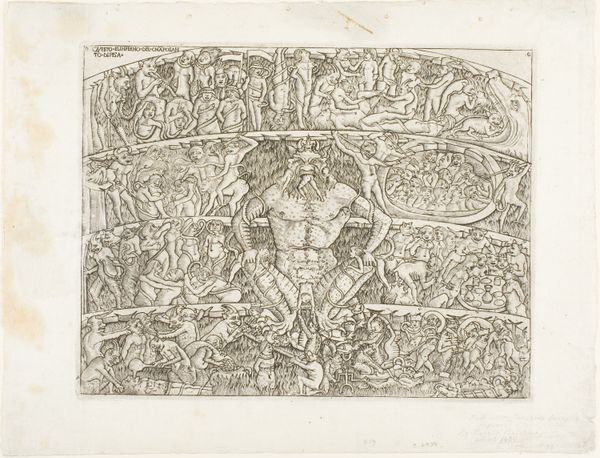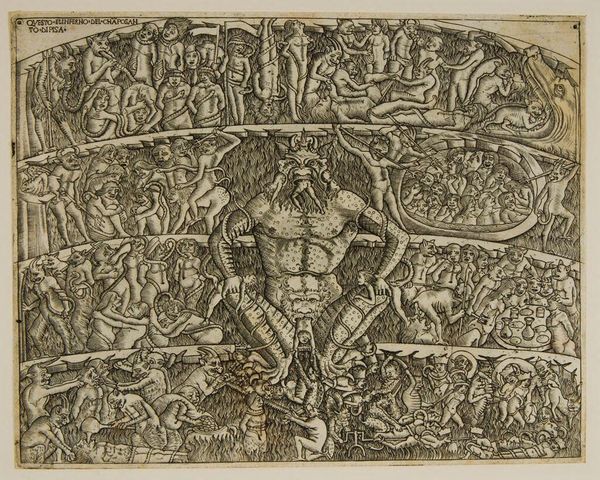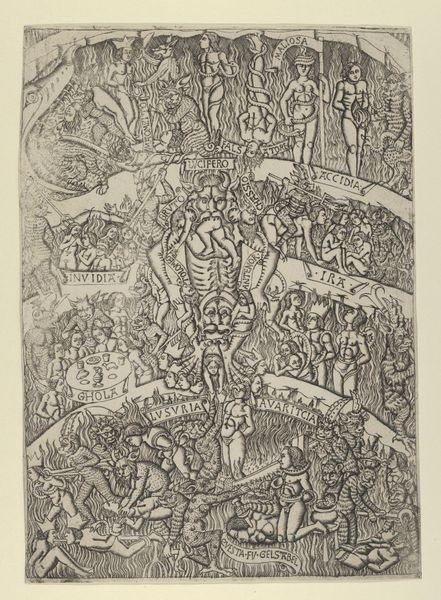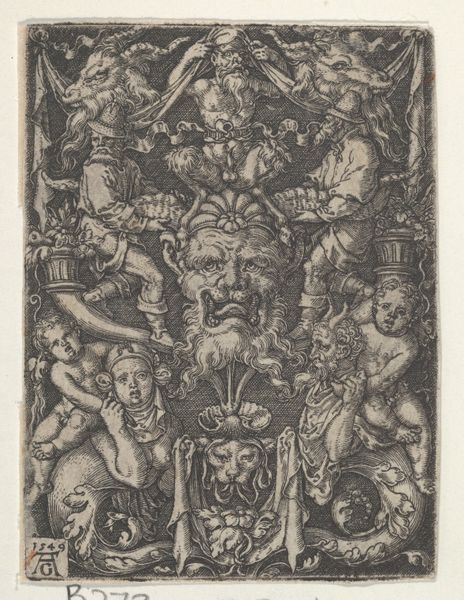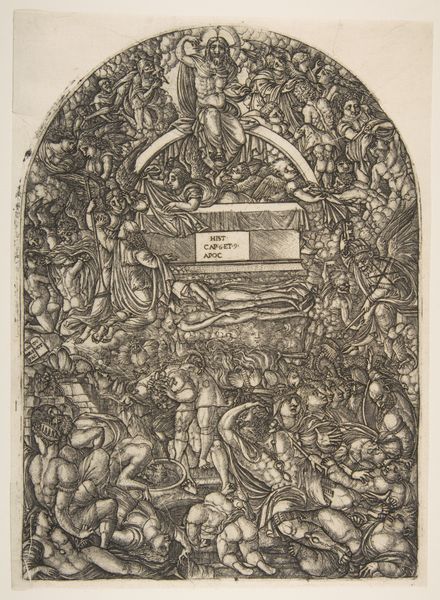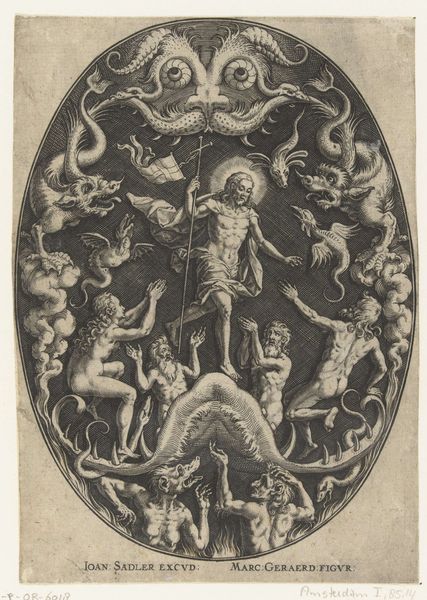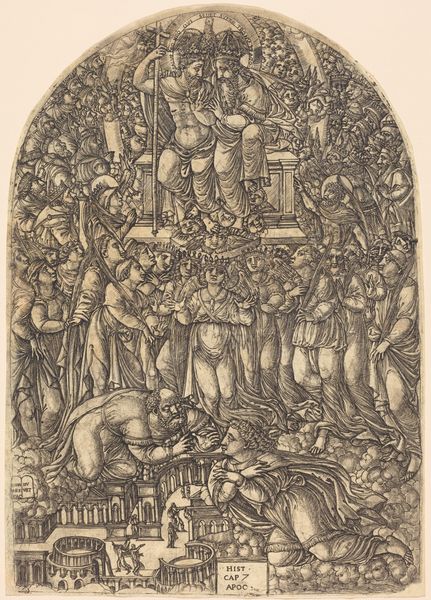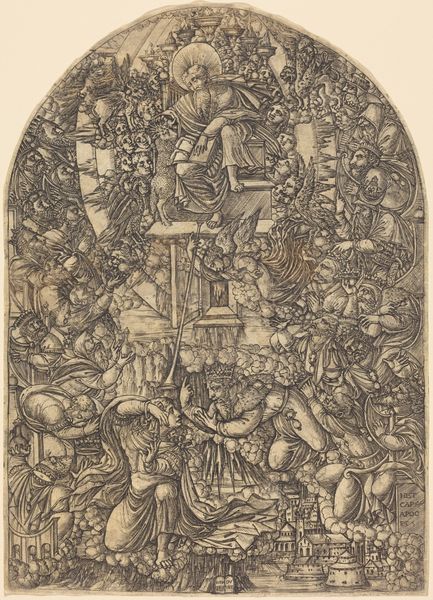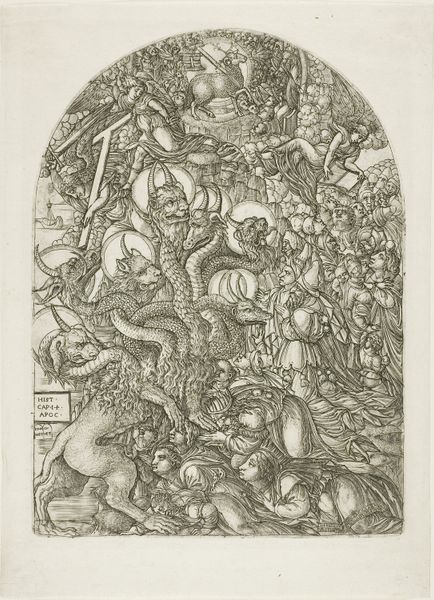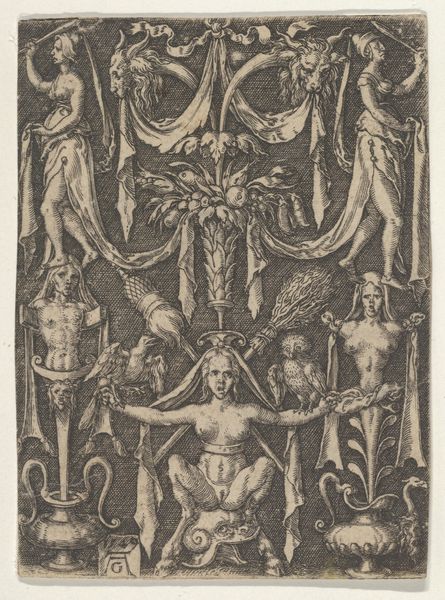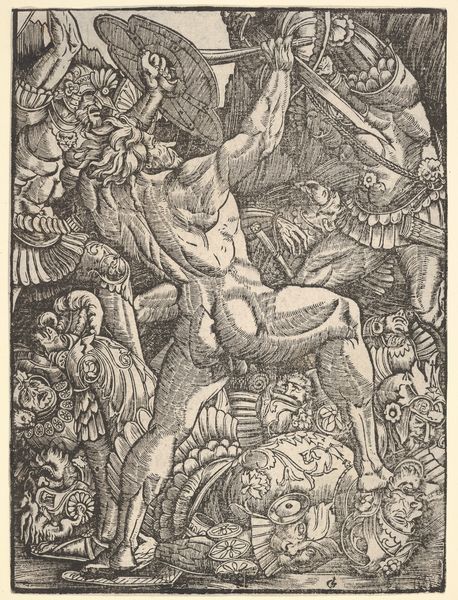
The Inferno according to Dante, after the Last Judgement fresco in the Campo Santo, Pisa 1465 - 1475
0:00
0:00
drawing, print, etching
#
drawing
#
medieval
#
allegory
#
narrative-art
# print
#
etching
#
figuration
#
islamic-art
#
history-painting
#
italian-renaissance
Dimensions: Plate: 8 7/8 × 11 1/4 in. (22.5 × 28.5 cm) Sheet: 9 9/16 × 11 13/16 in. (24.3 × 30 cm)
Copyright: Public Domain
Editor: So, here we have "The Inferno according to Dante, after the Last Judgement fresco in the Campo Santo, Pisa," an etching and print from around 1465-1475 by an anonymous artist. Looking at the intricate lines, the depiction of suffering, I’m immediately struck by how physically laborious creating this image must have been. What stands out to you about this piece? Curator: This print, relying heavily on the manual labor of etching, presents the *Inferno* not just as theological doctrine but also as a product of societal structures and belief. Consider the economics of producing this etching – the artist's workshop, the apprentices, the marketplace for such imagery. The choice of etching, a relatively reproducible medium, points to a deliberate attempt to disseminate this vision of hell. It underscores anxieties about morality and divine punishment, while simultaneously fueling a nascent print market. Editor: So, you’re saying the material process itself shapes how the message is received and its place in society? Curator: Precisely. Look at how the depiction of labor within the image contrasts with the labor required to *make* the image. The tortured figures in the print reflect a hierarchy—both divine and social. Consider, too, how the act of *reproducing* this scene potentially democratizes access to it, moving it away from the sole authority of the church or wealthy patrons. Does this challenge traditional notions of artistic value in your mind? Editor: Absolutely! It makes you consider how the social and economic circumstances impacted even spiritual beliefs. It’s not just about the vision of hell; it’s about how that vision was manufactured and consumed. I never thought about that. Curator: It is crucial to remember that artistic creations, even those depicting ethereal subjects, are deeply rooted in the material conditions of their time.
Comments
No comments
Be the first to comment and join the conversation on the ultimate creative platform.
